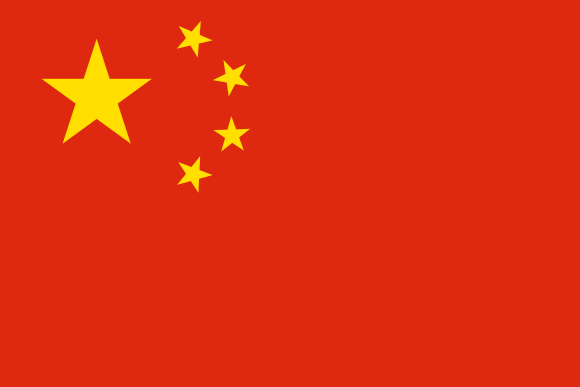What are the Spice Routes?
The Spice Routes, also known as Maritime Silk Roads, is the name given to the network of sea routes that link the East with the West. They stretch from the west coast of Japan, through the islands of Indonesia, around India to the lands of the Middle East - and from there, across the Mediterranean to Europe. It is a distance of over 15,000 kilometres and, even today, is not an easy journey. From our very earliest history, people have travelled the Spice Routes. At first, they probably ventured only short distances from their home ports but over the centuries their ships sailed further and further across seas and oceans. They braved treacherous seas and eventual hostile reception on arrival in an unknown land. These journeys were not undertaken purely in the spirit of adventure - the driving force behind them was trade. The Spice Routes were, and still are, first and foremost trade routes. Since ancient times, trade has had an important role in human life. When we buy something we are trading, exchanging one item (usually money) for another. However, our purchase is the final link in a long chain of buyers and sellers: from the supplier of raw materials, to the manufacturer, to the wholesaler, to the shop - and if the goods we buy come from abroad there may be several other stages in between.
The journey of the goods between all these links in the chain is what is called a trade route. In the case of the Spice Routes the links were formed by traders buying and selling goods from port to port. The principal and most profitable goods they traded in were spices - giving the routes their name. As early as 2000 BC, spices such as cinnamon from Sri Lanka and cassia from China found their way along the Spice Routes to the Middle East. Other goods were exchanged too - cargoes of ivory, silk, porcelain, metals and dazzling gemstones brought great profits to the traders who were prepared to risk the dangerous sea journeys. But precious goods were not the only points of exchange between the traders. Perhaps more important was the exchange of knowledge: knowledge of new peoples and their religions, languages, expertise, artistic and scientific skills. The ports along the Maritime Silk Roads (Spice Routes) acted as melting pots for ideas and information. With every ship that swept out with a cargo of valuables on board, fresh knowledge was carried over the seas to the ship's next port of call.
 Today, it may seem strange that the demand for spices was the main reason for such large-scale trade across such long distances. One probably thinks of them simply as flavouring for food. Yet, the word “spice” comes from the Latin species, which means an item of special value, as compared to ordinary articles of trade. Travelling these long distances becomes understandable if one considers the fact that many of the important spices had ritual and medical values and could only grow in the tropical East, from South of China to Indonesia as well as southern India and Sri Lanka. In particular, they grew in the Moluccas or, as they are better known, the Spice Islands. These are a chain of mountainous islands strung out in the Pacific Ocean between Sulawesi (Celebes) and New Guinea. From here came the fragrant spices of cloves and nutmeg which grew nowhere else in the world. To reach the spice markets found across Asia and Europe, the spices had to be transported thousands of kilometres over the seas.
Today, it may seem strange that the demand for spices was the main reason for such large-scale trade across such long distances. One probably thinks of them simply as flavouring for food. Yet, the word “spice” comes from the Latin species, which means an item of special value, as compared to ordinary articles of trade. Travelling these long distances becomes understandable if one considers the fact that many of the important spices had ritual and medical values and could only grow in the tropical East, from South of China to Indonesia as well as southern India and Sri Lanka. In particular, they grew in the Moluccas or, as they are better known, the Spice Islands. These are a chain of mountainous islands strung out in the Pacific Ocean between Sulawesi (Celebes) and New Guinea. From here came the fragrant spices of cloves and nutmeg which grew nowhere else in the world. To reach the spice markets found across Asia and Europe, the spices had to be transported thousands of kilometres over the seas.
One may never discover how people came to know and value these spices which grew so far away. As trading links from Indonesia fanned out through south and central Asia, they met with links that spread from the Middle East and the north. Goods were exchanged and traders would return to their homeland carrying the beautifully scented, exotic spices. Perhaps it was their strangeness and rarity that led great medicinal and spiritual values to be attributed to them. From ancient times, spices were burned as incense in religious ceremonies, purifying the air and carrying the prayers of the people heavenward to their gods. They were also added to healing ointments and to potions drunk as antidotes to poisons. To hide the many household smells, people burned spices daily in their homes. They were used as cooking ingredients very early on - not only to add flavour but also to make the food, which was often far from fresh, palatable, particularly in hot climates.
Myths and legends were woven around these exotic substances. They were linked to strange beasts like the phoenix, giant eagles, serpents and dragons. In the Fifth Century BC, the Greek historian Herodotus wrote how the spice cassia grew in a lake “infested by winged creatures like bats, which screeched alarmingly and were very pugnacious”. Some of these stories were probably created by the traders who, wishing to protect their profits, tried to hide the sources of the spices.
The profits to be made from spices were considerable. They were small and dried, and consequently could be transported easily. The wealth of the spice trade brought great power and influence and, over the centuries, bloody battles were fought to win control of it and the routes along which it took place.




